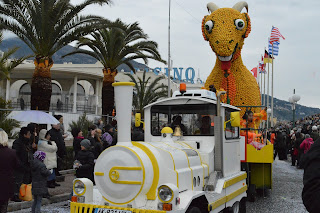If Samuel Pepys
were alive today, he would undoubtedly be an influential blogger or even a
vlogger. I remember learning about this great 17th Century diarist
at school.
Pepys witnessed
many momentous events in British history including the beheading of a king, the
plague and the Great Fire of London. He lived through the reigns of five
monarchs as well as the years under Oliver Cromwell. The Samuel Pepys: Plague, Fire, Revolution Exhibition at the National
Maritime Museum offered an excellent opportunity to find out more about the
great diarist than they taught me at school.
Travel by Thames
Weekend tube
engineering works didn’t make the journey to Greenwich easy. However, the
Thames came to the rescue. Why travel underground when you can take the ferry,
relax and admire the view of London from the river? Just as naval man Pepys did
perhaps?
 |
| Ferry lands at Greenwich Pier close to the museum |
King’s Execution
The exhibition has
received much acclaim, so I was intrigued to find out why for myself. This is a
modern exhibition that seeks to recreate an experience of the time. No sooner
had I stepped over the threshold than I was confronted by the sound of an axe.
At just 15 years
of age, Pepys attended the execution of Charles I. Dead ahead was a painting
depicting various scenes from the day. To the left were the king’s gloves - the
elegant gloves of a man who met an horrific end. Just days later I found myself
at the spot where Charles I had stood trial in Westminster Hall. The exhibition
gave more meaning to the plaque marking the spot.
Husband and Wife
Paintings of Pepys
and his wife appeared side by side – just as in life. Sadly, Pepys’ wife died
at just 29 years of age. From the outset the museum got away from the
traditional juxtaposition of artefact after artefact. The pieces were carefully
selected to create an experience – to bring the people and times to life from
their possessions.
Theatre
I particularly
enjoyed the little theatre. A small stage recreated Shakespeare’s Macbeth and a
comedy using silhouettes. We heard Pepys’ comments on the various actors’ and
actresses’ performances at the time. By coming from the stark execution scene
to an example of Restoration Theatre, the exhibition gave an impression of the
contrasting times that Pepys lived through.
Great Fire
The best section
in the exhibition was undoubtedly the recreation of the Great Fire of London. A
black and white pen and ink drawing showed the London of the day set in panels.
Pepys’ own words told the story as the fire grew, spreading from frame to
frame. Pepys and his wife first heard of the fire at 3am from their maid. The
diarist later told the king about what he had seen.
Shorthand
The diary itself
is kept in Cambridge. Pepys wrote in shorthand. A tablet showed how it looked.
If you touched a section, you could see a transcription in English. Pepys only
actually kept the diary from 1660 until 1669. He mistakenly thought that he was
going blind due to straining his eyes in poor light and abandoned it.
Censored
Pepys realised the
historical significance of his diary. He ensured its preservation and
publication after his death. Despite criticising the King’s extravagance and behaviour, it seems that some of Pepys’ own behaviour and words met
with publishers’ disapproval. Some sections were censored until relatively
recent times. Definitely not sections I heard about at school.
Social Mobility
It was fascinating
to hear about Pepys' career in naval administration. It is
extraordinary to think that the son of a tailor rose to hold such important
offices thanks to a grammar school education.
More?
At the end of the
exhibition, I found myself wanting more. Another room. Another clever animation
perhaps? I suppose the museum’s budget could not stretch that far.
A museum
exhibition that leaves you wanting more is quite an accolade.












































